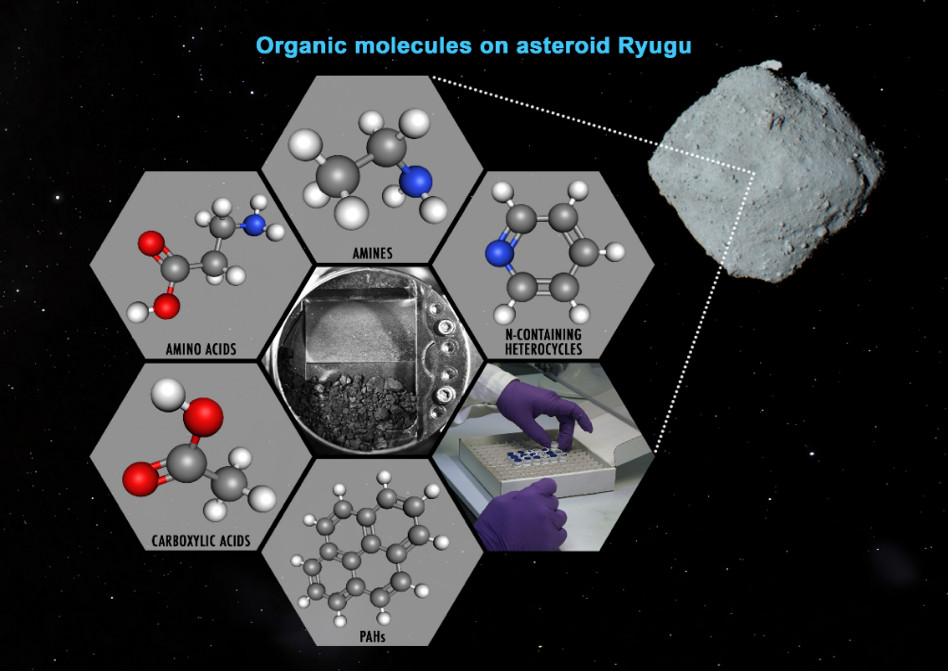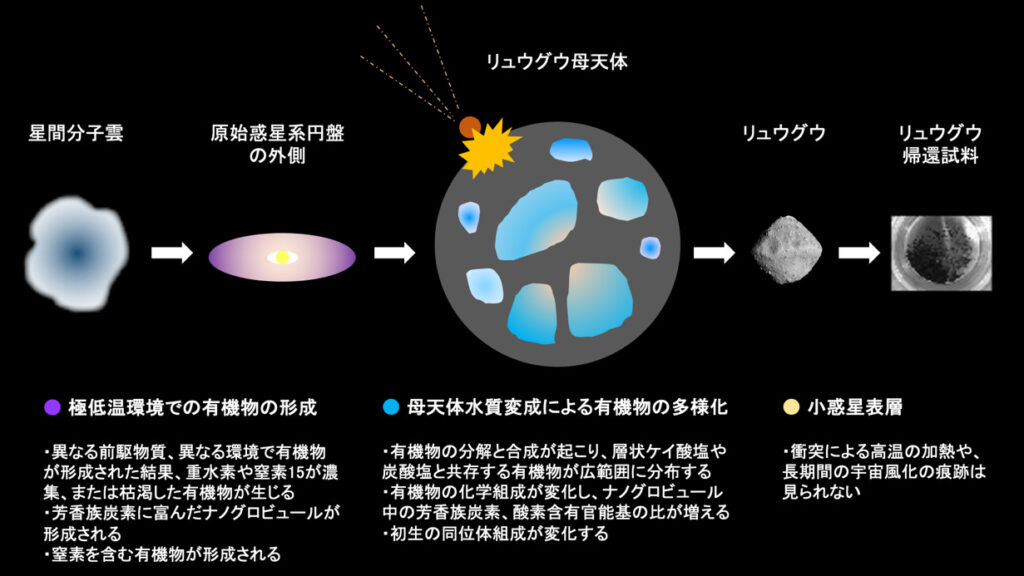Joint Press Release
Professor Shogo Tachibana, Professor Seiji Sugita, Associate Professor Tomokatsu Morota, Special Staff Shizuho Furuya
Soluble organic molecules contained in the Ryugu sample brought back by Hayabusa2 were analyzed mainly by solvent extraction. Ryugu is a dark primitive asteroid belonging to the C-type asteroids, which are the most common in the asteroid belt, and is rich in hydrous minerals such as carbonaceous chondrite meteorites. Primitive carbonaceous chondrites are known to contain a variety of soluble organic molecules, including amino acids, and may have supplied preliving organic molecules that led to the birth of life to the early Earth and other celestial bodies. In this study, organic molecules contained in Ryugu surface samples obtained from the first touchdown sampling were analyzed by research teams from Japan, the U.S., and Europe. As a result, various organic molecules such as amino acids, amines, carboxylic acids, aromatic hydrocarbons, and nitrogen-containing cyclic compounds were detected. These organic molecules could be released from Ryugu’s surface and transported to other celestial bodies, or they could be used as organic resources.

Figure: Conceptual diagram of organic molecules found in surface samples from the asteroid Ryugu
For more information, please see
JAXA press release: https://www.jaxa.jp/press/2023/02/20230224-1_j.html
Graduate School of Science press release: https://www.s.u-tokyo.ac.jp/ja/info/8304/
Publication URL: https://www.science.org/doi/10.1126/science.abn9033


